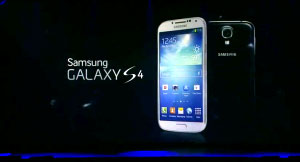Editor’s note: Bill Ready is CEO of Braintree, an online and mobile payment provider to many of the top apps in the App Store, including Uber, Airbnb, Angry Birds, OpenTable, Fab and HotelTonight. Follow him on Twitter @williamready.
When asked about a Facebook app for iPad in November 2010, Mark Zuckerberg brushed off the question with a quip. “iPad’s not mobile. Next question…. It’s not mobile, it’s a computer, it’s a different thing.” Since then, Facebook has evolved its view of mobile, having dealt with the struggles of its user base moving to mobile before they had an answer to mobile monetization. However, the debate over whether tablets are mobile devices has continued.
The introduction of the Samsung Galaxy S4 may finally put an end to the debate. The Galaxy S has been one of the best-selling smartphone models ever and the next incarnation will have a 5-inch display – just under the size of the Samsung Note II. Now, the next best-selling phone on the market may, in fact, be a tablet that people are carrying around in their (oversized) pockets.
The similar user experience on smartphones and tablets has led to the convergence of the two devices. Smart phones are getting bigger (iPhone 5 increased from a 3.5-inch to a 4-inch screen) and tablets are getting smaller (iPad mini – now the best-selling iPad model – reduced the size of the iPad screen by nearly two inches). Perhaps the best exemplification of this phenomenon is the Samsung Galaxy Note II, which sports a 5.5-inch display and has been dubbed a “phablet” because it can be used as both a tablet and a phone.
Those that would argue that tablets are just a new form of PC point to data that tablet usage is rapidly cannibalizing PC usage. Tablets now account for a third of the overall PC market, and consumers who own tablets find they are using their PCs less. It is also the case that 90 percent of consumers use their tablets at home, instead of a PC. However, it is also the case that tablets are clearly being used as portable devices, with 40 percent of consumers using them outside the home.
In addition to being commonly used outside the home, the user experience on a tablet is fundamentally different than on a laptop or PC and is much more akin to a smartphone than a PC. For example, GPS and native applications allow for context-driven experiences across the web on both smartphones and tablets. Touchscreen displays and the absence of a physical keyboard require a style of interaction on both that is largely driven by context-aware experiences (i.e. applications that know about you or what you want so that you don’t have to enter lots of information for the application to work).
The implications of this are profound. Mobile devices are becoming the primary computing devices now that they pack the power to perform many of the things that people previously did on their PCs. Nowhere is this more evident than in e-commerce where mobile devices now account for more than 30 percent of all e-commerce shopping sessions. That percentage is more than doubling year over year, meaning that by the 2013 holiday shopping season, mobile devices will likely account for more than half of all e-commerce shopping. It is also the case that consumers aren’t buying mobile devices with the primary purpose of making phone calls anymore. In fact, phone calls are only the fifth most popular feature on smartphones – behind browsing the web, using social media, playing music, and playing games.
This radical shift in consumer behavior has created huge opportunities for those who have embraced it and massive threats for those who have failed to. Uber and HotelTonight are great examples of wholly new commerce experiences that are only possible because of mobile devices. At the same time, traditional e-commerce providers are seeing their conversion rates drop by 75 percent or more on mobile sessions if they have not properly optimized for mobile with context-driven experiences, such as one-touch checkout. Brick-and-mortar retail locations now deal with the showrooming phenomenon where more than 40 percent of consumers will use their mobile devices to price check items and perhaps complete orders online while in the store.
If the Samsung Galaxy S4 is as successful as its predecessor and manages to create the perfect combination of phone and tablet, the shift in consumer behavior toward mobile devices as the primary computing devices will certainly accelerate. Along with that will be a meaningful acceleration in the opportunities and threats that are posed by consumers shifting to mobile.
